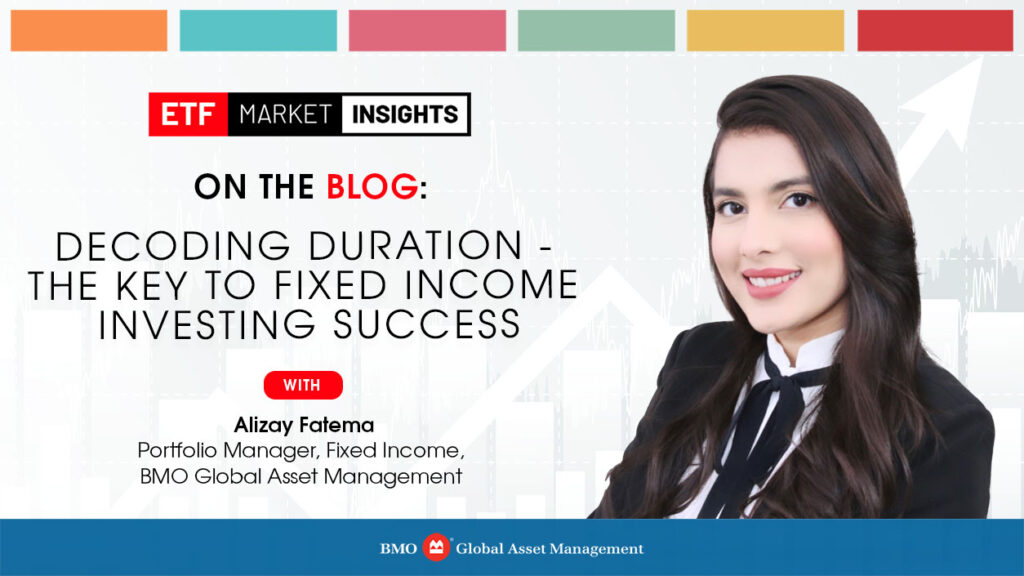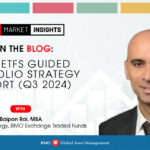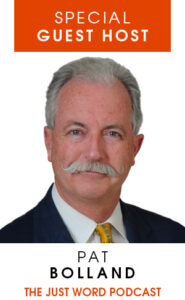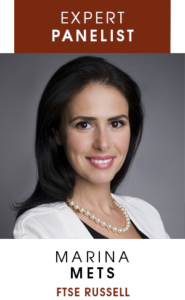
Navigating bond investments may appear complex, yet grasping some essential principles can greatly enhance your investment strategy. In this blog post, we’ll delve into duration – the secret sauce of fixed income investing.
We’ll discuss the concept of duration, why it matters and how it’s related to interest rate risk. We’ll also compare scenarios of rates falling or rising quickly and explore the implications of rate hikes and cuts (monetary policy) on fixed income portfolios and potential product positioning.
What is Duration?
Duration is a measure of a bond’s sensitivity to changes in interest rates. It is expressed in years and helps investors understand how much the price of a bond is likely to change when interest rates move. Essentially, duration estimates the percentage change in a bond’s price for a 1% change in interest rates.
There are two main types of duration:
- Macaulay Duration: The Macaulay duration calculates the weighted average time before a bondholder would receive the bond’s cash flows. 1
- Modified Duration: This takes the Macaulay Duration and adjusts it for the bond’s yield, providing a more practical measure for investors to assess interest rate risk by measuring the change of the value of the bond in response to a 1% change in interest rates. 2
The significance of duration and why it matters for bond investors?
As the biggest risk faced by fixed income investors is changes in interest rates, measuring duration is crucial to bond investors. As bond prices are inversely related to interest rate movements, bond prices fall when interest rates rise. As an example, a bond with a duration of 5 years will see its price change by approximately 5% with a 1% change in interest rates.
Duration as a double-edged sword – a blessing or a buzzkill
Using duration can be beneficial as it is a good estimation of bond price movement -it also helps as a comparison tool for investors who can compare various bonds with different characteristics.
Investors can also use duration to take advantage across the yield curve3 by positioning their portfolios appropriately such that they can take advantage of expected changes in the yield curve.
However, using duration also comes with its limitation and challenges. As duration is an estimation, it assumes that the interest rates will move in parallel shifts across the yield curve while in reality, changes in interest rates can be complex as different parts of the yield curve can change by different frequencies and magnitude.
Duration assumes linear relationship between bond prices and interest rate changes and doesn’t account for large shifts in the interest rates and ignores convexity4 which is a measure of the curvature of the relationship between bond prices and yields. Therefore, duration may not accurately predict the bond’s price for large movements in interest rates but can be helpful in smaller interest rate movements.
Duration is more suited to focus on short term interest rate risk as it does not fully account for long term risk factors such as changes in credit quality or macroeconomic factors5 which would impact bond prices. Moreover, some special terms in bonds such as embedded options6 and callable bonds6 can significantly alter their sensitivity to interest rates and therefore the usage of duration to calculate price sensitivity might not be appropriate for these types of bonds.
Interest rate risk dilemma – when is it the right time to spin the wheel & add duration.
With the term “adding duration” refers to selecting securities with longer maturities, and on the other hand, choosing short term maturity securities would reduce duration. Whether you should add or reduce duration is dependent on the interest rate outlook. For example, when interest rates are expected to fall, adding longer duration bonds can be more attractive due to bond prices rising more significantly leading to potential gains as compared to shorter duration bonds. Adding or reducing duration can also result in a more diversified portfolio, balancing risks and returns. Bond investors can reduce duration — or interest rate risk — by selecting bonds or bond ETFs with short-term maturities and insulate their portfolios from large decreases in prices since short term bonds are less sensitive to the impact of interest rate changes as they have lower duration risk.
Another factor to account for while looking at duration risk is the shape of the yield curve. The yield curve is the curve created when all different interest rate available at specific points in time are put together and visualized. When longer term interest rates are lower than shorter term interest rates, the yield curve is considered inverted3. Conventionally, bonds which have longer term maturities have higher yields because this compensates investors holding the bond for longer periods and the uncertainty related future inflation and interest rates. This results in an expected upwards sloping yield curve.
The current inversion of the yield curve indicates that investors expect short term rates to decline in the future, therefore longer-term rates are lower as compared to shorter-term rates. Historically, the yield curve has never been inverted for this long and previous inversions lasted less than a year. This persistent inversion indicates that the market expects rate cuts and lower inflation in the future. With time, a normalization of term structure will prevail, and the yield curve will return to its normal shape.
The table below show’s different interest rate scenarios and how they would impact bonds of different durations.
| Interest Rate Scenario | How to potentially position your portfolio | BMO Fixed Income ETFs |
| Rate hikes |
|
ZST – BMO Ultra Short-Term Bond ETF ZUCM – BMO USD Cash Management ETF ZUS – BMO Ultra Short-Term US Bond ETF ZMMK – BMO Money Market Fund ETF Series ZFH – BMO Floating Rate High Yield ETF
|
| Pause or rates unchanged |
|
ZAG – BMO Aggregate Bond Index ETF ZUAG – BMO US Aggregate Bond Index ETF ZCS – BMO Short Corporate Bond Index ETF ZSU – BMO Short-Term US IG Corporate Bond Hedged to CAD Index ETF
|
| Rate cuts |
|
ZAG – BMO Aggregate Bond Index ETF ZUAG – BMO US Aggregate Bond Index ETF ZTL – BMO Long-Term US Treasury Bond Index ETF ZFL – BMO Long Federal Bond Index ETF |
1 https://www.investopedia.com/terms/m/macaulayduration.asp
2 https://www.investopedia.com/terms/m/modifiedduration.asp
3 The yield curve describes the shapes of the term structures of interest rates and their respective terms to maturity in years. https://www.investopedia.com/articles/economics/08/yield-curve.asp
4 Convexity can provide a better measure for the relationship between bond prices and yields, as duration assumes that interest rates and bond prices have a linear relationship, convexity produces a slope. Bonds with a higher convexity are less sensitive to interest rate changes https://www.investopedia.com/terms/c/convexity.asp
5 Macroeconomic factors are large scale economic factors, such as the interest rates, and GDP.
6 Embedded options provide a variety of solutions to add or subtract value from the core securities price. There are as many varieties of embedded options as there are needs for issuers and investors to alter the structures of their agreements — from calls and puts to cumulative payouts and voting rights and one of the most common conversions. https://www.investopedia.com/articles/investing/031513/guide-embedded-options-bonds.asp
7 Callable bonds are a tool used by issuers, especially at times of high prevailing interest rates, where such an agreement allows the issuer to buy back or redeem bonds at some time in the future. https://www.investopedia.com/articles/investing/031513/guide-embedded-options-bonds.asp
8 Credit risk is the risk of default on a debt that may arise from a borrower failing to make required payment.
Disclaimers
Commissions, management fees and expenses all may be associated with investments in exchange traded funds. Please read the ETF Facts or prospectus of the BMO ETFs before investing. Exchange traded funds are not guaranteed, their values change frequently and past performance may not be repeated.
For a summary of the risks of an investment in the BMO ETFs, please see the specific risks set out in the BMO ETF’s prospectus. BMO ETFs trade like stocks, fluctuate in market value and may trade at a discount to their net asset value, which may increase the risk of loss. Distributions are not guaranteed and are subject to change and/or elimination.
BMO ETFs are managed by BMO Asset Management Inc., which is an investment fund manager and a portfolio manager, and a separate legal entity from Bank of Montreal.
This material is for information purposes. The information contained herein is not, and should not be construed as, investment, tax or legal advice to any party. Particular investments and/or trading strategies should be evaluated relative to the individual’s investment objectives and professional advice should be obtained with respect to any circumstance.
“BMO (M-bar roundel symbol)” is a registered trademark of Bank of Montreal, used under licence.



















































